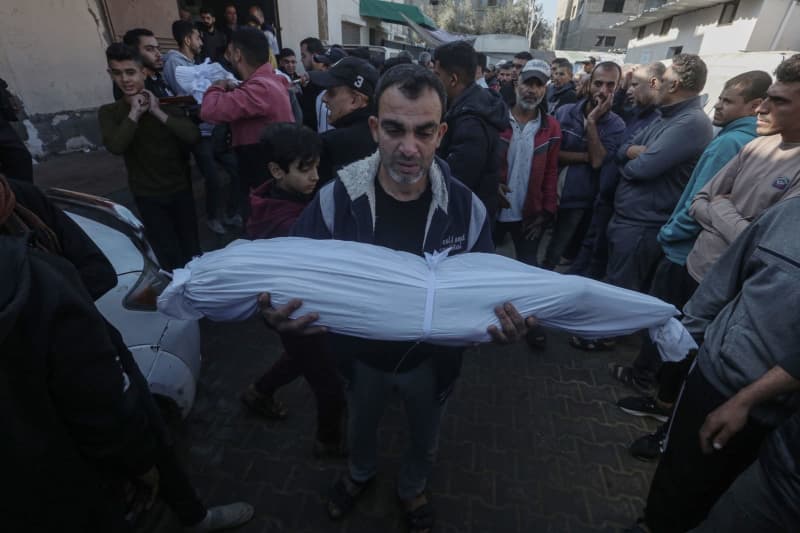The ongoing conflict in the northern Gaza Strip has reached alarming levels, described by Jan Egeland, head of the Norwegian Refugee Council (NRC), as akin to a “dystopian horror film.” His recent observations during a visit highlighted the catastrophic destruction, with extensive areas comprising only rubble and ruined homes. Despite the dire conditions, the resilience of the local population remains evident, as many people continue to endure and survive amidst the devastation. Egeland’s stark pictures emphasize the severity of the humanitarian crisis facing the region, reflecting both the immediate toll of conflict and the prolonged challenges of displacement and destruction.
The difficulties faced by aid workers in the area are compounded by the rampant looting of relief supplies. Egeland recounted witnessing such incidents personally at the Kerem Shalom border crossing near Rafah, where groups of men congregated with sticks, ready to seize the humanitarian aid trucks. This troubling scenario underscores not only the desperation of the surroundings but also highlights the increasing chaos that hampers the delivery of essential services to those in desperate need. As aid becomes scarce and difficult to secure, the risks associated with delivering assistance to vulnerable populations heighten, further complicating the humanitarian efforts underway.
The urgency of the situation is amplified by ongoing military operations as Israeli forces intensify their offensive against Hamas, the Palestinian militant group. Reports indicate significant casualties among militants in areas such as Rafah, Jabaliya, and Beit Lahia, where military positions and weapons caches are being targeted. Though military officials claim successes in these operations, the conflict’s toll on civilians cannot be overlooked, with Palestinian sources reporting the deaths of at least 35 people since the offensive escalated. This ongoing violence accentuates the need for a strategic reevaluation of approaches to the crisis and highlights the tragic human cost of the conflict.
Egeland’s insights reflect a growing international concern over the humanitarian conditions in Gaza. As conditions deteriorate, the ability of humanitarian organizations to operate effectively is threatened, necessitating urgent dialogues on how to improve aid access and ensure the protection of civilians. The emotional and physical toll on the population is immense, compelling a reevaluation of global responses to the humanitarian crisis. Ensuring that aid reaches those who need it most remains crucial, amid an environment rife with hostility and disruption.
The situation calls for a multifaceted response, addressing not only the immediate needs of food and medical supplies but also the longer-term implications of rebuilding infrastructure and restoring services. Efforts should include negotiations for ceasefires or safe corridors to facilitate aid delivery, as well as a focus on diplomatic pathways to reducing hostilities. The international community plays a pivotal role in advocating for the rights of civilians caught in the crossfire, urging all parties to respect humanitarian norms and protect those most vulnerable in these turbulent times.
Amid the chaos, the resilience of the Gazan people is a testament to the enduring human spirit. However, this resilience must not be taken for granted, nor should it overshadow the urgent need for an effective and compassionate international response. The plight of the population demands immediate attention, prioritizing their safety, dignity, and access to basic necessities against a backdrop of violence and destruction. As described by Egeland, the current state of affairs in northern Gaza reveals a pressing humanitarian crisis that necessitates both immediate action and ongoing support to safeguard the well-being of its people.

